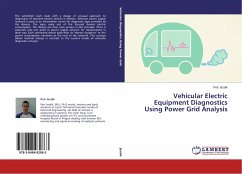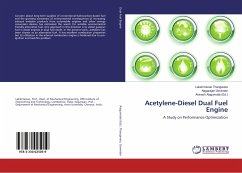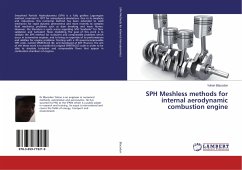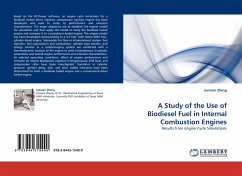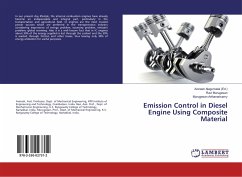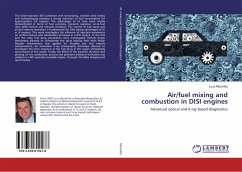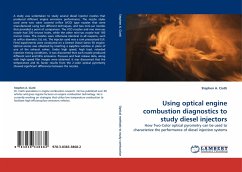
Using optical engine combustion diagnostics to study diesel injectors
How Two-Color optical pyrometry can be used to characterize the performance of diesel injection systems
Versandkostenfrei!
Versandfertig in 6-10 Tagen
52,99 €
inkl. MwSt.

PAYBACK Punkte
26 °P sammeln!
A study was undertaken to study several diesel injector nozzles that produced different engine emissions performance. The nozzle styles used were two valve covered orifice (VCO) type nozzles that were manufactured using two different techniques, and two mini-sac nozzles that provided a point of comparison. The VCO nozzles and one mini-sac nozzle had 200 micron holes, while the other mini-sac nozzle had 160 micron holes. The nozzles were otherwise identical in all respects, such as orifice diameter, l/d, etc. The injector used was a cam pressurized EUI. Fired experiments were conducted on a Det...
A study was undertaken to study several diesel injector nozzles that produced different engine emissions performance. The nozzle styles used were two valve covered orifice (VCO) type nozzles that were manufactured using two different techniques, and two mini-sac nozzles that provided a point of comparison. The VCO nozzles and one mini-sac nozzle had 200 micron holes, while the other mini-sac nozzle had 160 micron holes. The nozzles were otherwise identical in all respects, such as orifice diameter, l/d, etc. The injector used was a cam pressurized EUI. Fired experiments were conducted on a Detroit Diesel Series 50 engine. Optical access was obtained by inserting a sapphire window in place of one of the exhaust valves. Under high speed, high load, retarded injection timing conditions, it was discovered that each nozzle produced different soot and NOx emissions. Pressure and heat release data, along with high-speed film images were obtained. It was discovered that the temperature and KL factor results from the 2-color optical pyrometry showed significant differences between the nozzles.




